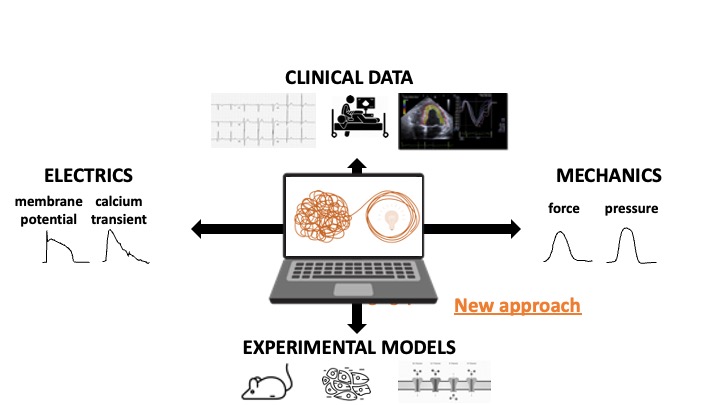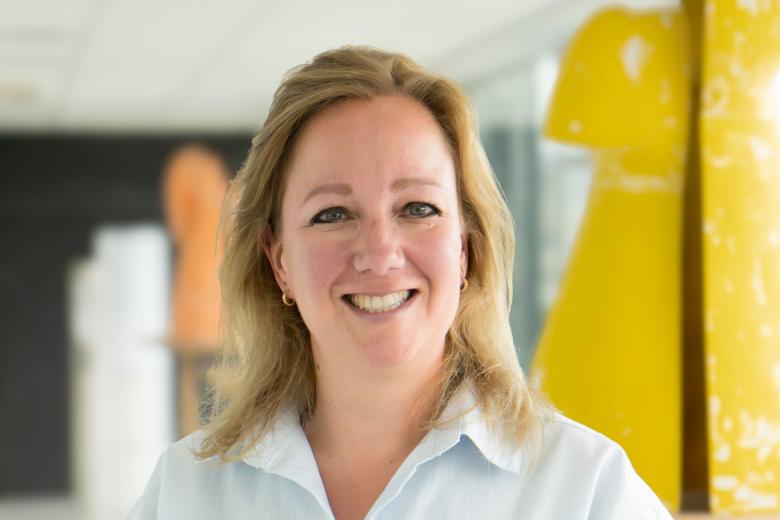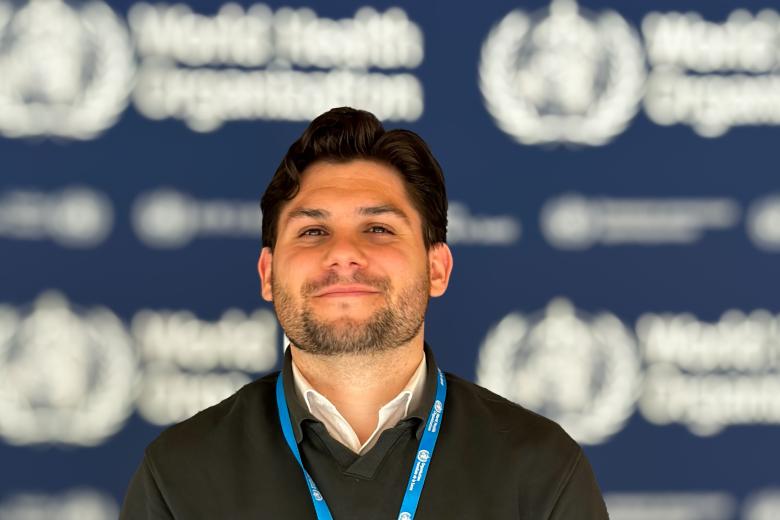Making impact with a digital twin heart
At the CARIM research institute (school for cardiovascular diseases) in Maastricht, a group of researchers – led by Joost Lumens - is working with ‘het digitale tweelinghart’ (the digital twin heart): a computer model that simulates the human heart. This research gives rise to a great deal of optimism. Thanks to the possibilities offered by the digital twin heart in the future, treatments can be better targeted to the clinical profile of one specific patient. Also, fewer invasive and (therefore) burdensome treatments for the patient will be needed and there will be a reduction in the number of the laboratory animals required for research.
The technology is helping scientists like postdoctoral researcher Aurore Lyon to conduct innovative research into cardiovascular diseases and their best possible treatment. In this article, Aurore talks about the impact of the digital twin heart research line.
A digital twin heart; what is it?
Aurore Lyon: "A digital twin heart is a computer model of the heart based on real human data. We simulate the human heart with it. Through working with real human data, we can make the virtual models increasingly accurate as well as increasingly personalised. They help us to better understand heart diseases: for example, they can reveal which patients are more at risk of sudden cardiac death. Crucial information when it comes to prevention, because if we know which patients are more at risk, we can detect and possibly prevent it at an earlier stage.
Aurore Lyon: "What we can achieve with these virtual models is really powerful: for individual patients but also for the overall development of cardiac research. It's really wonderful!"
We design the virtual models based on mathematical equations that describe the behavior of the heart supplemented by measurement data from patients in the hospital, such as ECGs (a recording of the heart that graphs the heart's electrical signals) or echo’s. In this way, we can personalize the model based on the characteristics of a group of patients and eventually even those of an individual patient. So, the virtual model is very much like your own heart: it is your virtual twin. Eventually, we work towards being able to predict the effects of certain treatments by applying them to the digital twin heart before we do so on the patient itself. It will take some time before we get there. After all, each person is different and so we also have to take into account characteristics such as gender, underlying diseases and patient history, as well as biological variables. But we are making considerable progress."
You received your PhD from Oxford University. Can you tell us something about your research there?
Aurore Lyon: "My PhD research is a good example of how research can have an impact for patients. Of the group of patients in my study, we didn't know which of them were at risk of sudden cardiac death. Therefore, it was important to know who was at risk. The cardiologists I worked with said, 'Here you have a group of patients. Here are their ECGs and their clinical data (e.g. known to have episodes of fainting, arrhythmia or cardiac arrest). Based on the shape of their ECG, can you predict which of them is more at risk of sudden death?' I compiled information from the ECGs that cannot be detected by the human eye using machine learning and artificial intelligence.
The doctors were enthusiastic about the results of the study. In fact, from the ECGs, I found three subgroups of patients who had different shapes of their ECG’s. Once I had found these groups, the next question was: is one of these groups more likely to experience a high-risk incident? And this was indeed the case for one of the groups. The study gave both doctors and patients very valuable information. Now when a new patient comes in, we can quickly say: 'Based on your ECG, you belong to a high-risk group'.
I then wanted to know: why is this group more at risk? What is going on with these patients? To find the cause, I used virtual simulations, comparable to what I am doing now at CARIM. With these, I was able to find two different mechanisms that explain why these patients are more at risk. With this, we can offer these patients (more) personalised treatment with medication or provide them with better guidelines for prevention.

Back to the digital twin heart. What do you think is the impact of this research?
"The research has an impact in many ways. Firstly, the impact on the patient and the course of their disease. Thanks to the virtual model, the diagnosis we can give the patient is more accurate, personalised, faster and based on facts and data. This allows us to treat the patient better and more often with a more appropriate treatment. The digital twin heart also allows us to work with companies to develop medicines, therapies and devices that may be the best fit for a group of patients and eventually even a specific patient. Testing hypothesis about a treatment or investigating at the cellular level directly in the patients is often impossible because of ethical and safety reasons. Fortunately, regulation authorities are increasingly approving our use of virtual models to develop hypotheses or new therapies. It is almost impossible to do otherwise: you cannot get any closer to reality. There are more and more studies showing that computer models of the heart have more predictive value than animal models. That is an added advantage: researchers will be less and less dependent on laboratory animals.
The digital twin heart also has an impact on fundamental researchers and their collaboration with doctors. Through computer modelling, the results of basic science research can be immediately translated to healthcare and vice versa. Aurore Lyon: "Imagine that a disease affects a specific molecule in the heart; something on a small scale. We then don't really know how that translates to the patient. In practice, something like that is then studied at the cellular level (under the microscope) or in the patient. These were separate worlds until now. With the digital twin heart, we can translate the effects on the cellular level to the patient and back again. This is how we bring those worlds together.
There are two more worlds coming together thanks to the digital twin heart. In fact, the line of research also connects experts from two fields of research that until now have often been approached separately: those who deal with the electrical function of the heart and those who study its mechanical function. Aurore Lyon: "Thanks to the technology, we make it possible for different experts to look past the segmentation and see the complete situation as whole. The great thing is that this also opens up new ideas for research. The connecting effects of the digital twin heart research has therefore a major influence on research at CARIM”.
Aurore Lyon: "I love this role of bridging disciplines”.
With her French origins and previous career paths in the UK, it makes just as much sense that Aurore Lyon ended up at CARIM in Maastricht. "It's really not everywhere that hospital and researchers are as well integrated as here in Maastricht. CARIM is really working on this. For me, that was an important reason to join this group. And not only is cardiovascular research here in Maastricht of a high standard, they see the value of computer modelling here and play an active role in it. That is unique in the world!
Also read
-
Esther Heuts - Director of Education for Medicine
As a clinician, educationalist and mother of three teenagers, Esther Heuts understands better than anyone the constantly evolving world of students and doctors. From this academic year, Esther will draw on that experience in her new role as Director of Education for Medicine.

-
Mariëlle Heuts: deputy director Faculty of Health, Medicine and Life Sciences
Mariëlle Heuts joined the Faculty of Health, Medicine and Life Sciences as Deputy Director on 1 May 2025. She sees her previous work experience in various management and advisory roles at APG, Loyalis and Vodafone come together in her new position at our faculty.

-
Bruno Rocha – Drawing on Global Health skills to identify and report health threats
Through the Global Health master's programme, Bruno Rocha (an alumnus of the programme) cultivated the ability to apply a broad global lens. He puts this into practice in his current role as a consultant epidemiologist at the World Health Organization (WHO).
